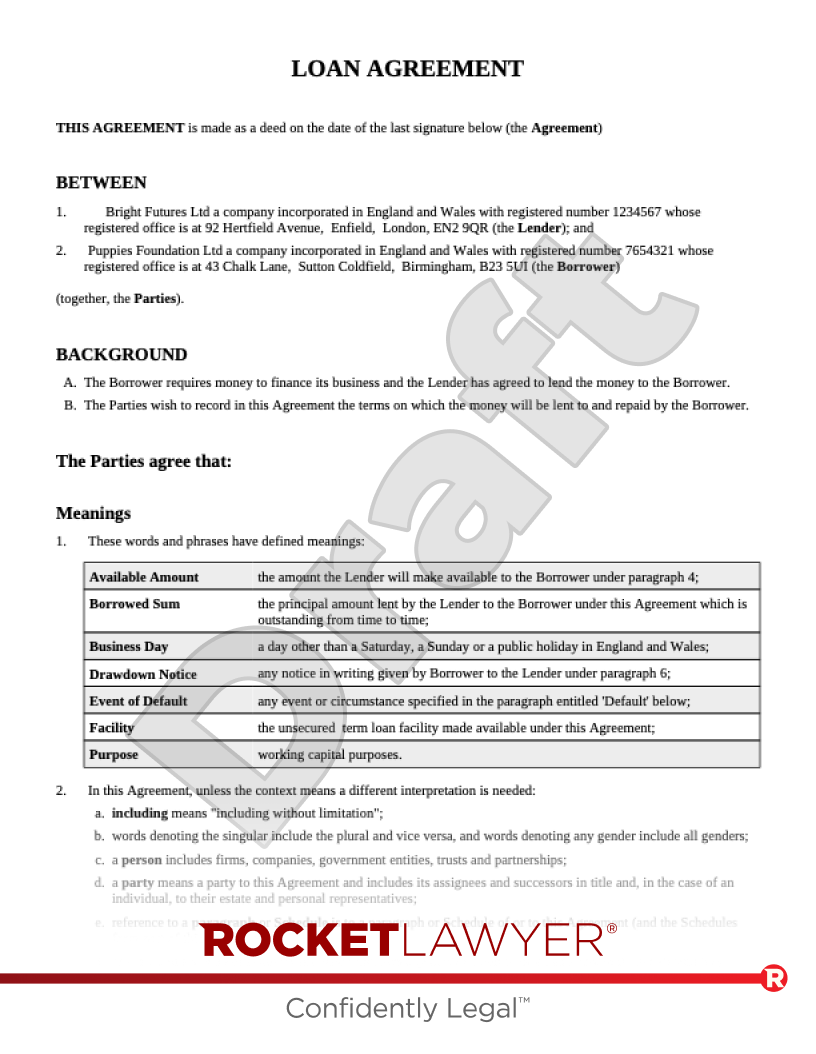Covering off the essentials
The borrower wants to be sure it will receive the right amount at the right time. Whether a company intends to finance a particular purchase or simply needs access to funds for general day-to-day (or 'working capital') purposes, it must be certain it will receive the amount of money expected by the date it is needed – and that it can keep the loan for a certain period of time.
The lender wants to be sure it will get its money back. The lender needs to know it can count on the loan being repaid by a certain date – whether in instalments or in one lump sum at the end. The lender also wants to be sure it will receive interest on the loan from the borrower at an agreed rate and at agreed intervals.
Safeguards to ensure the money is repaid
As a condition of lending, the lender will require certain statements of fact or warranties from the borrower. Such warranties may include:
-
the borrower conducting its business properly
-
the borrower not being in any financial difficulty that could jeopardise its ability to repay the loan
-
the information on which the lender based its decision to lend being accurate
To help ensure the borrower makes payments on time, interest (which is higher than the normal rate of interest) may be charged on payments that are overdue.
The borrower must use the loan for the purpose approved by the lender and must often make certain other promises (or 'covenants') about what the borrower must and must not do while it has the lender’s money. Examples of the 'must dos' are the borrower:
-
continuing to conduct its business properly and lawfully
-
notifying the lender if it looks like it might breach the loan agreement
Examples of 'mustn’t dos' are:
-
changing the nature of its business
-
disposing of any asset outside the ordinary course of business without the lender’s consent
The lender may insist the borrower grants a form of security to protect against non-payment by the borrower. Security in this sense is a form of collateral taken over other assets of the borrower which the lender can call upon if the borrower does not have the money to repay the loan. For more information on the difference between secured and unsecured loans, read Unsecured and secured loans. To learn more about taking security, Ask a lawyer.
Taking action against a borrower in default
The lender can demand immediate repayment of the loan if there is an event of default (ie the borrower is in breach of the agreement).
Events of default will typically include any non-payment, a warranty ceasing to be true, a breach of a covenant, or the borrower becoming insolvent (ie being unable to pay any of its debts on time).
Before calling in a loan or enforcing any security, the lender should consider discussing the breach with the borrower to determine whether there is a real cause for concern or simply an administrative oversight or another breach that is not serious.
A lender taking action may have wider implications for the borrower – it may trigger a right for third parties to also take protective measures against the borrower. This may jeopardise not only the borrower’s ability to repay the loan but its survival generally.
For more information, read Funding your business.




